Ebi, 海老 , shrimp, lobster, or other long-tailed crustacean
Quite possibly one of my favourite motifs! I love all sea-creature motifs, but I seem to have a soft spot for the goofy-looking rock lobsters often found on wafuku. I had several choices to work with for today’s coordination (you can see them all below) but in the end this pente lobster tsuke-obi won out. I just love it so much.
I paired it with this gorgeous soft brown Taisho-era houmongi. I love how the black pops against the muted brown, and the beige clouds on the kimono echo the shells on the back of the obi. Red accessories draw further attention to the ebi itself and anchor the red sleeve lining. The finishing touch was a brown obijime tied in a way to faintly evoke a lobster trap or net.
As much as I love this obi I tend to forget how long it’s pre-tied in the back. It would suit a taller person (like me, hello!) much better than the mannequin, I think. I don’t mind though, I still love the finished outfit to bits.
So far these are all the items I have with ebi motif in one form or another, but I’ll never say no to more!
- Black Pente Lobster
- Metallic Lobster
- Crustacean side 1
- Muslin with Shrimp
Items used in this coordination
- Taisho Brown
- Black Pente Lobster
- Stripes with Ume
- Red Shibori
- Orange Furisode

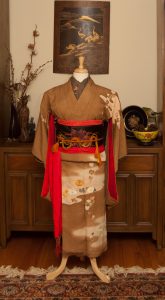
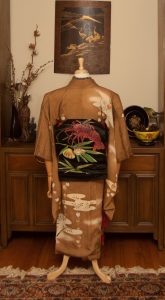
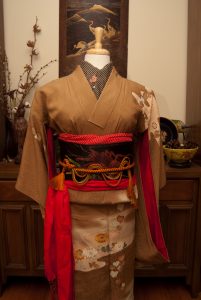
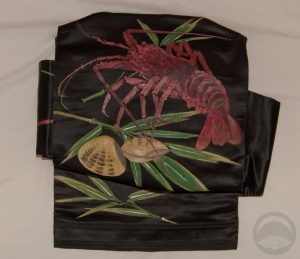
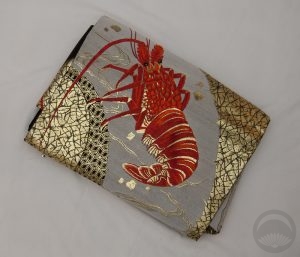
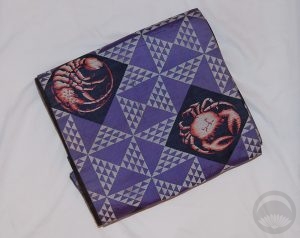
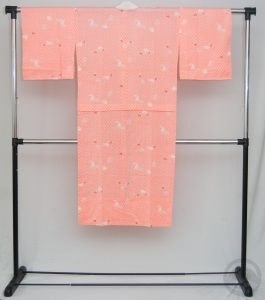
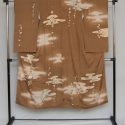
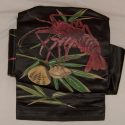
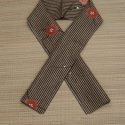


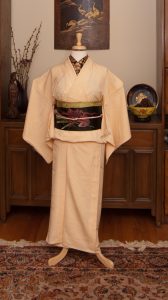
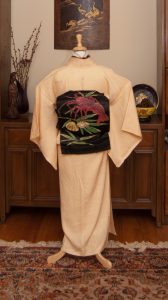
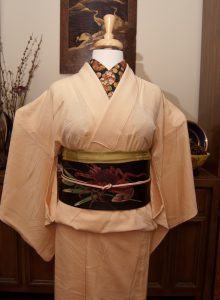
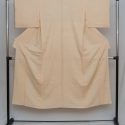
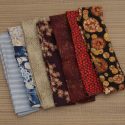
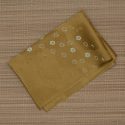
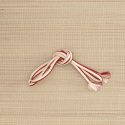
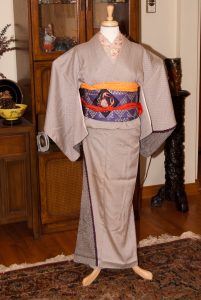
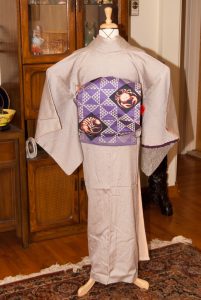
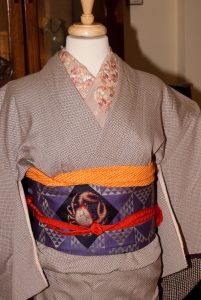
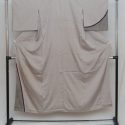
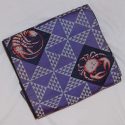
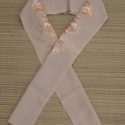
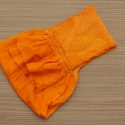
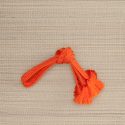
























 Bebe Taian
Bebe Taian CHOKO Blog
CHOKO Blog Gion Kobu
Gion Kobu